
With the invention of the steam engine came the era of Luxury Sea Liners, cruising along the globe. The rich and famous enjoyed journeys to the mysterious and faraway lands, so far only heard about from travellers or seen lithograph prints of.
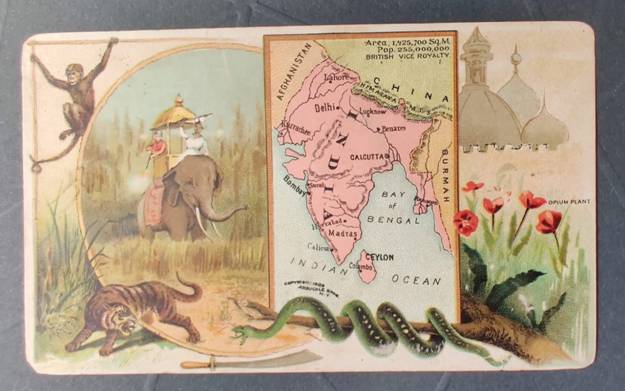
India was one such mystery, Bombay being the gateway. Visitors to the city would check in at the best hotels with baggage and along the way would have stickers of the hotel (most stylized in design)…..the sticker being a mark of the guests having enjoyed their stay at the hotel.
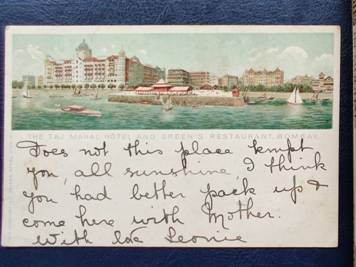
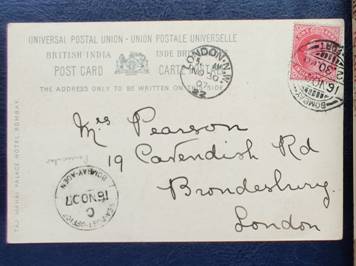
A holiday in Bombay was like a holiday in the South of France….beautiful full of sunshine.
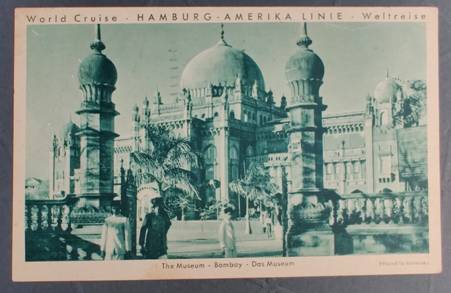
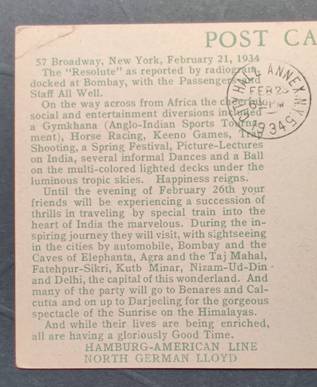
Travellers sent back city picture postcards to friends and relations back home, announcing their arrival in a new world. Sometimes the postcards described the route of their travel….the route to India as described by the Hamburg-American Line.
The Taj Mahal Hotel, Bombay

Built in 1903 by the House of Tatas, the hotel was built facing the Arabian Sea and almost offered the first sight of India to a visitor. It was built in the Revival Indo-Saracenic Style.
It was the finest luxury hotel in India competing with the best in the world for offering comfort.

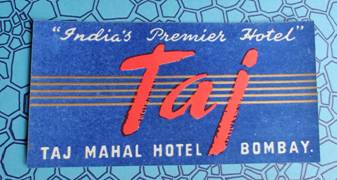
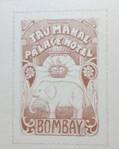
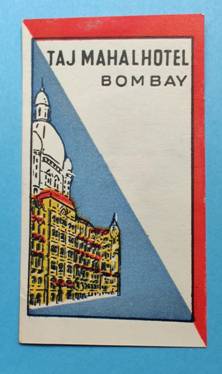
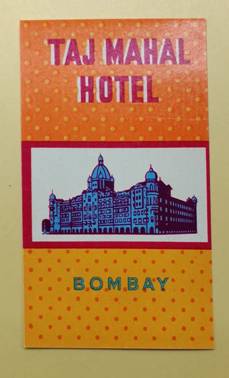
The Taj Mahal Palace Hotel luggage labels were the most coveted by the travellers. With time, the hotel changed its design from a classical style to a more modernist style.
The Great Western Hotel
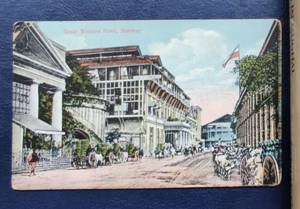
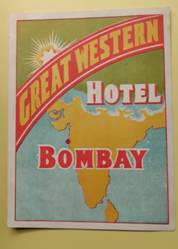
This large and palatial-looking building has served many uses. It was once the residence of the Governor of Bombay. William Hornby, a former Governor who was instrumental in constructing the Hornby Vellard which bound the beach at Mahalaxmi, lived here for a few years of his term in office. It also served as the Admiralty House, the residence of the Commander in Chief of the Indian Fleet from 1770–1795. Lachlan Macquarie, who was later the Governor of New South Wales (1810-1821), lived at Admiralty House. He records in his journal for 23 April 1794 that, `Mr Tasker having been so obliging to give us a friendly invitation to live in his townhouse (Admiralty House), during the hot weather and while he should remain in the country, (where he lives at present) we accepted of his offer'. Around 1800, it was purchased by the Government and transformed into The Recorders Courthouse, until 1878. The original porch was removed when the street was widened. The property was purchased by Rustomjee Jeejeebhoy and then sold to the Sassoon Family. In 1883 it was sold again and converted into a hotel known as the Great Western Hotel. A new five-storied wing was added in the early 1890s. It was designed by renowned architect S M N Chandabhoy, who also designed another smaller three-storied building in the later 1890s.
In time, the hotel closed and the rooms have been divided and further subdivided for optimum rental.
The Majestic Hotel
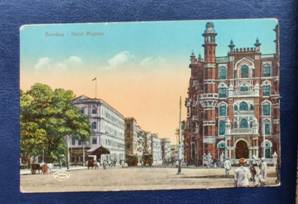
The hotel was built in 1909 (just after The Taj Mahal) and had 96 bedrooms and two lifts. The hotel was built on a site formerly occupied by YMCA, and was leased by the Italian hoteliers Messrs, Viglietta and Palazzi, the famous owners of the Savoy Hotel in Mussoorie and the Carlton in Lucknow.
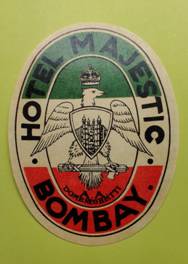
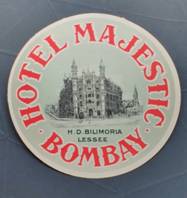
Air India
Then came the jet age of the 1950’s and air travel started booming. Travel became faster and you could make your own itinerary. The airlines also started sticking luggage stickers on suitcases. The competition heated up as travellers not only wanted many hotel stickers on their bags, but also of different airlines.
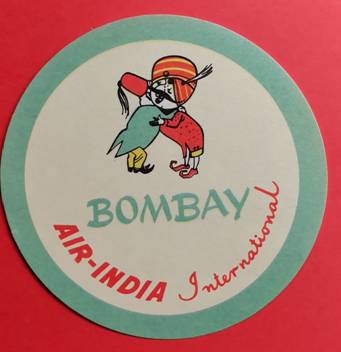
The Grand Hotel
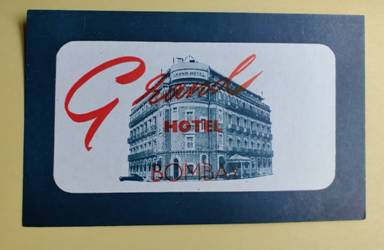
The last of the few surviving small hotels, The Grand Hotel was inaugurated in 1926. It was designed by George Wittet, one of Mumbai's best known architects of that time, who also had designed some of the well-known landmarks of Mumbai such as the Gateway of India, the Prince of Wales Museum (now known as Chatrapati Shivaji Maharaj Vastu Sanghralaya), the Institute of Science, and Bombay House. The hotel is located in Ballard Estate, the then heart of the central business district of its times.
The Ritz Hotel
The Ritz Hotel, Bombay was built in the new age and fashionable Art Deco Style in the upcoming district of Oval and Marine Drive. It has shut down recently and may reopen in a new avatar.
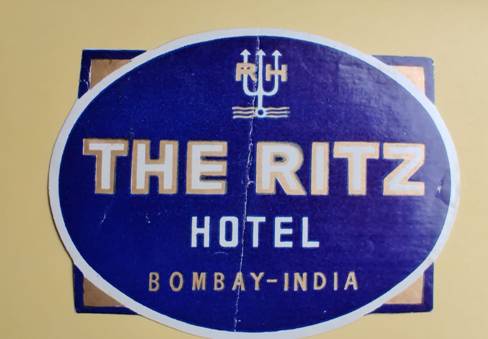
Holiday Inn
The popular American hotel chain opened its first hotel in India at the tourist resort, Juhu Beach area, near Santacruz Airport.
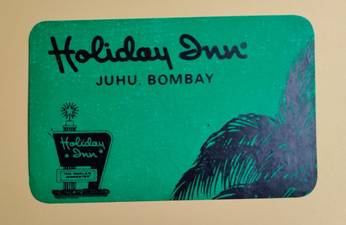
Hotel Waldorf
Originally called the Waldorf, it is now known as Astoria. It still operates with its grand Art Deco style.
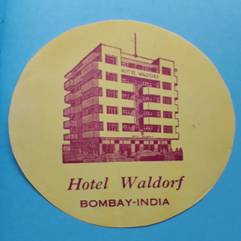
The Ambassador Hotel
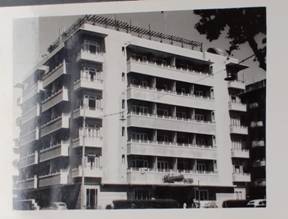
The Ambassador Hotel was renovated in the 1980s, with a space-age ‘Revolving Restaurant’, offering a 360-degree view of the city.
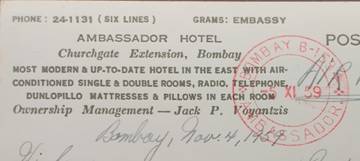
The hotel always had its loyal guests and for long tried to offer a glimpse of the old world charm.
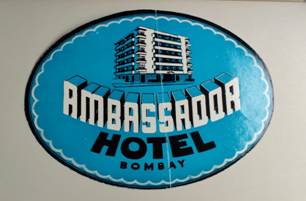
The Airlines Hotel
The Airlines Hotel was patronized by the crew of many airlines.
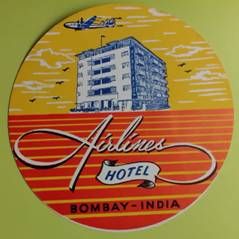
Mirabelle Hotel
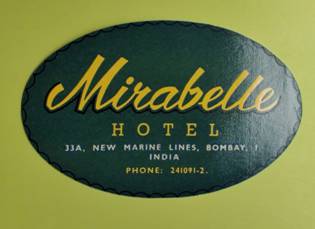
Today this hotel is not traceable at this address, but it would have been a small guest house. It is only this luggage label that survives to tell the tale.
The West End Hotel
The West End Hotel was inaugurated in 1948. The Bell Boy was traditionally the local guide to all guests. The hotel’s popularity was sometimes judged by the conduct of the Bell Boy and his Captain. West End continues to be a Family Run Property.
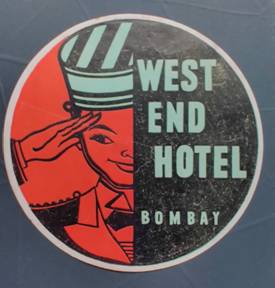
Natraj
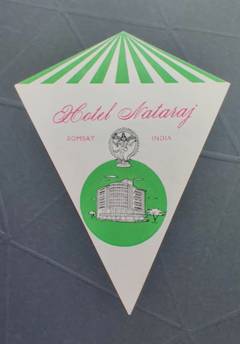
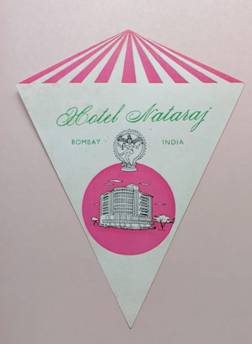
The old fashioned Natraj gave way to the very contemporary Inter Continental Boutique Hotel on Marine Drive. It lost its very Indian flavour
The Oberoi
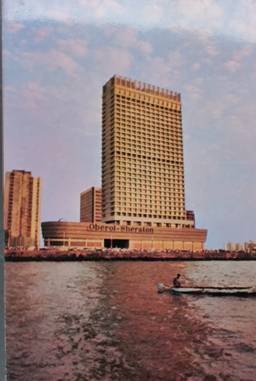
With the coming up of The Oberoi Sheraton, it was a game-changer for the Travel and Tourism sector in Bombay and Bombay lost its old charm to become Mumbai, with a new Sky High Line
